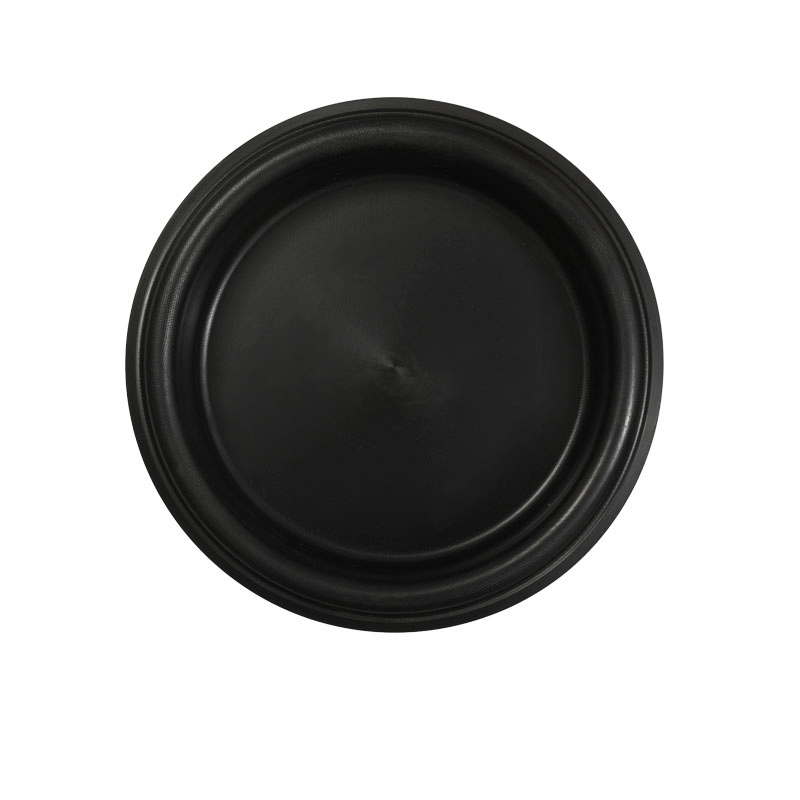
Hangzhou Biaozheng Rubber Plastic Fittings Factory
Professional rubber diaphragm research design and manufacturing

Hangzhou Biaozheng Rubber Plastic Fittings Factory
Professional rubber diaphragm research design and manufacturing
Diaphragm is the main part of diaphragm pump products. […]
Diaphragm is the main part of diaphragm pump products. There are three series of diaphragms: composite diaphragm, rubber diaphragm and tetrafluoro diaphragm, and different materials are available. Today, let's talk about the important role of the diaphragm and the choice of material!
Diaphragm transmission is a fully enclosed and sealed form that transmits pressure energy and mechanical motion into the interior of the pneumatic diaphragm pump by means of a diaphragm to transport, compress fluid or drive components. Through the flexible diaphragm, the reciprocating motion can be transmitted to the cylinder, and the diaphragm movement can be used to inhale, compress, and exhaust.

The choice of diaphragm material is mainly determined by the properties, pressure and temperature of the fluid to be sealed. The overall design of the diaphragm should take into account the movement mode, manufacturing conditions, and structural space constraints. The diaphragm of the pneumatic diaphragm pump is reliable and low cost to use the pneumatic pump in the flammable and explosive environment, and the fluid will not be overheated because the diaphragm pump has little agitation to the fluid.
The diaphragm is divided into four materials: neoprene, nitrile rubber, polytetrafluoroethylene (F4), and polyperfluoroethylene (F46). The diaphragm made of nitrile rubber is not corrosion-resistant, oil-resistant and wear-resistant, and can be used in some non-corrosive liquid transfer pumps. Neoprene diaphragm is based on nitrile nitrile rubber, which can properly transport some weak acid and weak alkali liquids. The diaphragm made of polytetrafluoroethylene (F4) has good corrosion resistance and can withstand the corrosion of various media. The color is pure White. The diaphragm made of polyperfluoroethylene (F46) is white and transparent in color, and its corrosion resistance is stronger than that of polytetrafluoroethylene (F4), which is resistant to corrosion by any medium.
At present, the demand for diaphragm pumps in the domestic market is increasing. When purchasing diaphragm pumps, many units do not know much about the material used by the diaphragm, one of the core components of diaphragm pumps. Especially between polytetrafluoroethylene (F4) and F46. During the sales process, we encountered many customers who regard F4 as a good diaphragm. In fact, F46 is the ideal diaphragm for corrosion resistance.
The diaphragm can meet the needs of different users, and can be placed in various special occasions to pump media that cannot be pumped by conventional pumps, and all have achieved satisfactory results.
We are Custom Rubber Diaphragm Valves Manufacturers and Pneumatic Actuator Valve Diaphragm Suppliers in China. All sub-suppliers are inspected and reviewed, and all product procurements are conducted only in qualified sub-suppliers. The raw materials, purchased parts, and outsourced parts provided by the sub-suppliers must undergo a rigorous review when entering the factory.

Copyright © Hangzhou Biaozheng Rubber Plastic Fittings Factory All Rights Reserved. Technical Support:Smart cloud >